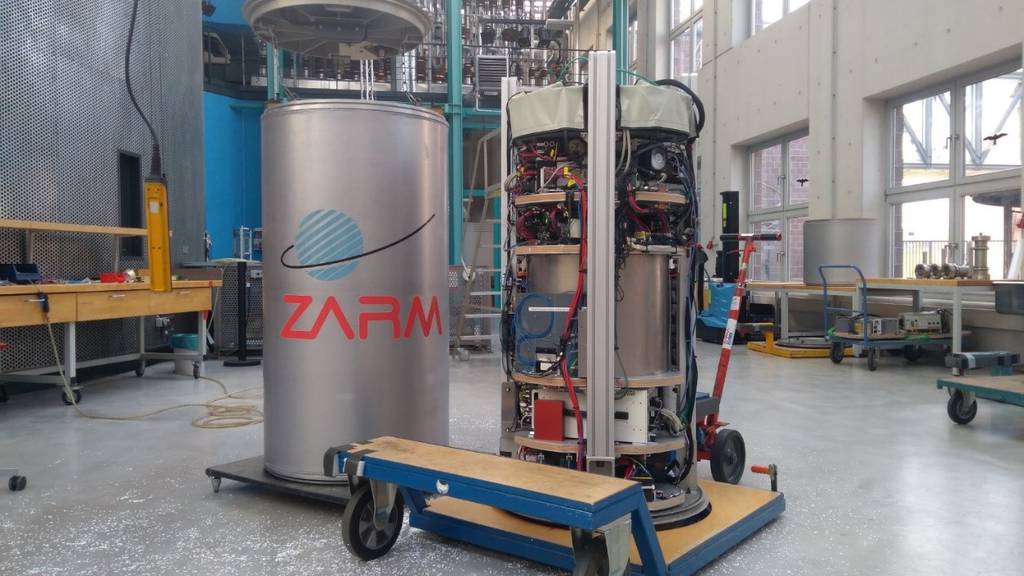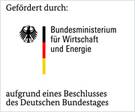QUANTUS-2
QUANTUS-2 is a BEC apparatus set up in a catapult capsule for operation in the drop tower, where we investigate matterwave interferometry in extended free fall.
The compact setup combines laser cooling of Rb-atoms with subsequent evaporative cooling in a magnetic chip trap and provides a high flux of ultra-cold atoms. Preparation of a BEC of >100000 atoms can be achieved in less than 2 seconds. This allows us to make optimum use of the available microgravity time and to perform experiments with two (four) subsequently prepared ensembles in a single drop (catapult launch). The experiment is designed to conduct matterwave interferometry with two different atomic species (Rb and K). Recent investigations have concentrated on the preparation of atomic ensembles at very low kinetic temperatures (<100 pK) using a so-called magnetic lens, and their observation after extended free evolution. Current work is now extending this to matterwave interferometry within the full timescale accessible in the drop tower.
Work on QUANTUS-2 is carried out within the QUANTUS-V Fallturm project. This is a collaborative project led by Leibniz University Hannover with 6 partnering institutions. Besides ZARM and LUH these are HU Berlin, JGU Mainz, TU Darmstadt, and the University of Ulm.

Related publications
J. Rudolph et al.: A high-flux BEC source for mobile atom interferometers, New Journal of Physics 17, 065001 (2015)
Contact
M. Cornelius
Funding
The QUANTUS-V-Fallturm project is supported the German Space Agency (DLR) with funds provided by the Federal Ministry of Economic Affairs and Energy (BMWi) due to an enactment of the German Bundestag under Grant No. 50WM1955.




 "
"